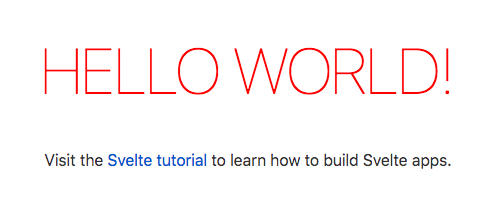6 mins read
Experimenting with Svelte - A Journal
It’s a good bright sunday, I had a nice lunch, took a short nap and now back infront of the laptop - bored and thinking of doing something productive.
That’s when I remembered Svelte; the super awesome brand new web frontend framework with the tagline Cybernetically enhanced web apps.
I wanted to check it out and see what all the fuss is about. I decided to blog about the experience in a live fashion and I will be writing this as I go.
Will I find it amazing? or will I hate it?, Will I even get time to try it out properly and actually complete this journal?, let’s find out!
Hour 0 - I don’t know Svelte at all.
I opened https://svelte.dev, And the main selling points were
-
Write less code - Boilerplate-free components. Ah, like most other framework promises, but fails to deliver? let’s see…
-
No virtual DOM - Svelte compiles to vanilla JavaScript. Wait, that is actually quite interesting. I definitely wanna see it in action.
-
Truly reactive - No complex state management libraries, reactivity within JavaScript. Nice. I have always been a fan of less dependencies.
Enough talk, let’s dive into some Hello World!.
Starting with an empty Svelte project was way easier than I imagined. I started with the sveltejs/template and used degit for project scaffolding as recommended.
npx degit sveltejs/template project-name
cd project-name
And then install and run using
npm install
npm run dev
Phew, that just went good!


I like it when things just work without having to go on stackoverflow treasure hunt to fix things.
Time to learn something solid: https://svelte.dev/tutorial/basics
- An application is composed of one or more Components.
- Components are reusable block of code which contains HTML, CSS and JS that belong together in a .svelte file. -> that’s pretty neat. I don’t have to write 3 different files for every component!
<style>contains all CSS.<script>contains all JS and the rest is HTML- Variable names in JS can just be used directly with
{varName}, when the value changes, the value in the page changes as well. -> This means no more this.refresh() or this.setValue() calls. I already like this a lot. <img {src} alt="A man dances.">Just works when src is an image reference. I don’t even have to providesrc={src}. -> Ok, maybe that’s a bit too much for shorthanding? do I hate it? No.- Whatever CSS that I add is scoped only to the component! It won’t affect rest of the component. -> I can safely mess with CSS and expect the whole page to not break now
- Use
import Nested from './Nested.svelte';to import other components and use them. - Use the
$: name = firstName + lastName;syntax to make sure name is reactive and gets updated whenever firstName/lastName changes!$here is a JavaScript label which says execute this statement whenever any of the values are updated which is pretty neat. (another usecase will be to log a value whenever it changes!)
I learned a bit more, but writing it all out here will be boring for me and anyone who is reading this. So I recommend you to try it out yourself.